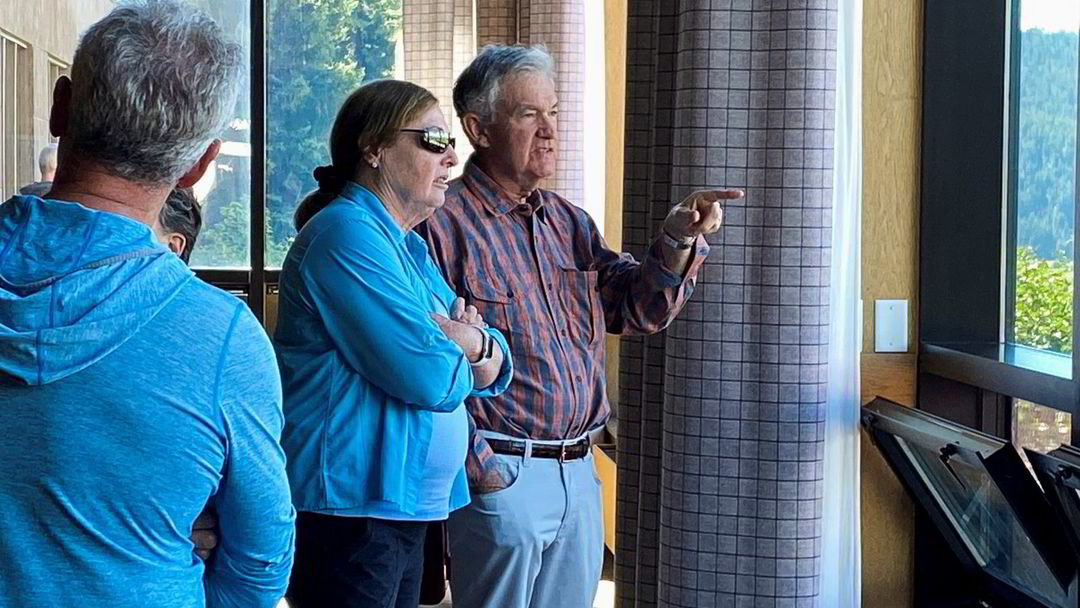The article continues below the ad
Central bankers from around the world have gathered for the annual Jackson Hole Economic Summit in Wymoning. The market will look for signals from central bank governors who will discuss monetary policy with economists and government officials.
On Friday afternoon, central bank governor Jerome Powell gave a speech, and here any signal of a further rise in interest rates was picked up. Powell opened the speech by saying that inflation is still too high.
– We are prepared to raise interest rates further if necessary, and want to keep monetary policy at a restrictive level until we are sure that inflation is moving down towards our target, Powell said.
Unnecessary damage
The key interest rate in the USA is currently in the range of 5.25-5.5 per cent. Powell says the central bank believes this is enough to ease the pressure on the economy – but the uncertainty is great.
He points out that the central bank has made progress against high inflation, but warns that there is still a long way to go.
The article continues below the ad
– Doing too little can cause inflation to stick above the target. That could result in the central bank having to step in and curb inflation at a high cost to employment – doing too much could also do unnecessary damage to the economy, Powell said.
Powell said the Fed could keep interest rates steady at its next meeting in September, as investors expect. Those investors who hope most for a pause in the interest rate hike took particular note of the following formulation from Powell:
– Given how far we have come, we are in a position at the upcoming meeting where we can proceed carefully when assessing incoming data, the development outlook and risks, said Powell.
It gave short-term optimism in the interest rate market, which, just after the speech, priced in a lower probability of another interest rate jump during the next meeting, according to estimates obtained from Bloomberg.
Already next month, the stage is set for another interest rate meeting, and there are two more meetings during the year.
Swings
Wall Street, which ended yesterday with a cold shower, started the last trading day of the week with a weak recovery. Just after Powell’s speech, there seemed to be optimism among investors, yet the mood turned shortly after.
At 18.00 Norwegian time, the three key indices look like this:
The article continues below the advertisement The broad S&P 500 index rose 0.1 percent The industrial index Dow Jones rose 0.3 percent The technology index Nasdaq fell 0.1 percent
During last year’s meeting, the three key indices fell by more than three percent after the speech. At the time, he warned that it would hurt a bit to reach the target of two percent inflation.
– Powell’s speech this afternoon could create shock waves in the market until next week, wrote senior strategist Joachim Bernhardsen at Nordea in a recent report ahead of the speech.
So far, August has been a turbulent month on Wall Street – and the week is set to end with a decline. Bernhardsen believes that today’s speech will be able to define the sentiment in shares in the near future.
– Will Powell give hints that the Fed is more satisfied with the inflation trend after inflation has fallen back somewhat over the past few months? Or will he emphasize the message that interest rates must still be kept high, and perhaps raised more, to bring wage and price growth down, asked Bernhardsen.
Increased interest rate expectations
Recently, the “long” US government interest rates, i.e. the interest on US government bonds with longer maturities, have risen sharply. At the same time, several key figures are coming in that show prospects that growth in the real economy will hold up better than expected.
Interest rate expectations in the US are rising, and fears of an extended period of high core inflation have crept back.
Director Jonas Shum at Clarksons Securities says the market has so far been driven by optimists. Nevertheless, there are two major risk factors that he is monitoring going forward. He points to commercial property and the banking sector.
– The commercial property sector often has floating interest rates with short maturities, then these wash in high interest rates much earlier than, for example, households, which to a greater extent have fixed mortgage interest rates. At the same time, commercial property is a product, the price of which is linked to the level of interest. Commercial property is hit on both sides of the balance sheet, says Shum.
The article continues below the ad
When it comes to the banking sector, he is most concerned about the small banks. Namely, it is the small banks that have the highest degree of exposure to the commercial property sector.
– The small banks have a share of 70 per cent of commercial properties. The big banks have reduced their exposure over time, he adds.
*(Terms) Copyright Dagens Næringsliv AS and/or our suppliers. We would like you to share our cases using links, which lead directly to our pages. Copying or other forms of use of all or part of the content may only take place with written permission or as permitted by law. For further terms see here.
2023-08-25 16:07:10
#Central #bank #chief #Jerome #Powell #issued #inflation #warning #summit

